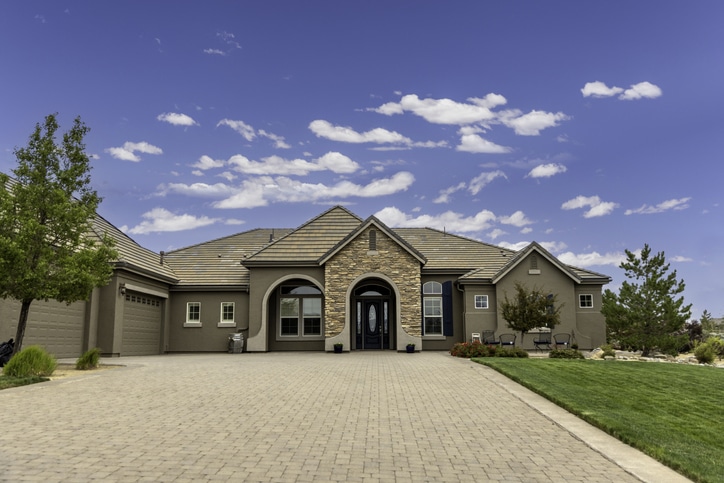Source: Realtor.com —
For those navigating America’s residential real estate market, it’s lately felt a bit like an out-of-control cargo train, ever threatening to veer off the tracks—stomach-churning price accelerations followed by interest rate hikes slamming the brakes. It’s little wonder that just about everyone seems to be searching for clues on where housing sales are going this year. But it’s not a one-size-fits-all market. Different kinds of homes—and the diverse people buying and selling them—have been affected in significantly different ways, especially when it comes to prices.
In fact, a deep dive into what’s going on with two of the nation’s iconic, bellwether housing categories—representing opposing ends of the price spectrum—might provide the clearest indications of what to expect for 2023 and beyond.
On one end are starter homes, traditionally smaller and more affordable, geared toward first-time homebuyers; on the other, luxury homes, the spacious mansions with every amenity imaginable marketed to the wealthy. Each market has faced its own highs, lows, and distinct challenges.
And their current price trajectories might come as a surprise.
Starter homes seem immune to the correction currently roiling the housing market, but luxury homes have been feeling the full effects. The Realtor.com® data team dug in to figure out exactly what’s going on in these very different segments of the housing market.
Starter homes, which Realtor.com defines as all two-bedroom listings, have been on a relatively steady and energetic upswing since early 2020 as cash-strapped buyers have competed for a limited supply of more affordably priced properties. These homes have outpaced the price growth in other parts of the real estate market: They finished 2022 with 15% year-over-year price increases.
Meanwhile, during the COVID-19 pandemic, prices for luxury homes—defined as the most expensive 10% of homes in any given market— skyrocketed as the stock market surged and buyers sought more living space. There was almost a 40% year-over-year price bump for luxury homes in the middle of 2021. But by the end of 2021, the luxury boom faded as the stock market struggled and recession fears grew. For most of 2022, luxury homes have seen modest-to-stagnant price growth, around 2.5%, ending the year close to flat.
So where are the metros where luxury home prices are stalling the most—and where entry-level home prices are rising the fastest?
To come up with these findings, Realtor.com compared the monthly year-over-year price changes for starter homes, luxury homes, and midprice homes to see how each segment of the real estate market has fared. Then we found five metropolitan areas where each segment tracked closely to the national trends. (Metros include the main city and surrounding towns and smaller urban areas.)
“Luxury purchases are more discretionary,” says Danielle Hale, chief economist at Realtor.com. After all, no one really needs a third or fourth home or a 10,000-square-foot abode with ocean views. So when market conditions are right, activity in that segment can change quickly.
During the early part of the pandemic, homeowners saw their equity rise as prices went up across the board. That gave high-end them a lot more cash for a next purchase, somewhat negating elevated prices. Rock-bottom interest rates made borrowing incredibly inexpensive. A migration of people who lived in coastal urban hubs, but who could newly work from anywhere, also meant buyers coming into markets with both high equity and high wages, driving up prices. And the bullish stock market performance resulted in more money in their pockets.
For starter homes, different forces are at work, Hale says.
“If you think of luxury home purchases as discretionary, starter home purchases are almost the opposite,” she says. “It’s more about timing and strategy.”
For people buying for the first time, or for those with tighter budgets, a home purchase is driven more by finding an opportunity to buy or sell that matches a need, not a whim. A rise in interest rates makes it more difficult for these buyers to gain a foothold.
When interest rates go up, the most affordable segment of the market gets squeezed. Homeowners who would normally sell their starter homes to move up to larger, nicer homes can’t sell because they would be trading their existing mortgages with a low rate for a new loan with a higher rate. It’s not financially viable, so many homeowners are staying put, limiting the number of starter homes for sale.
“When people in the market for a house are most looking for affordability, that’s challenging now,” Hale says.
What does it all mean in the current stressed-to-the-max housing market? Let’s take a deeper dive into the U.S. cities that are most indicative of these trends.
Where luxury home prices are stalling
Salt Lake City, UT
Luxury home price in December 2022: $1.15 million-plus
Change from 3-year price peak: -28.1%















